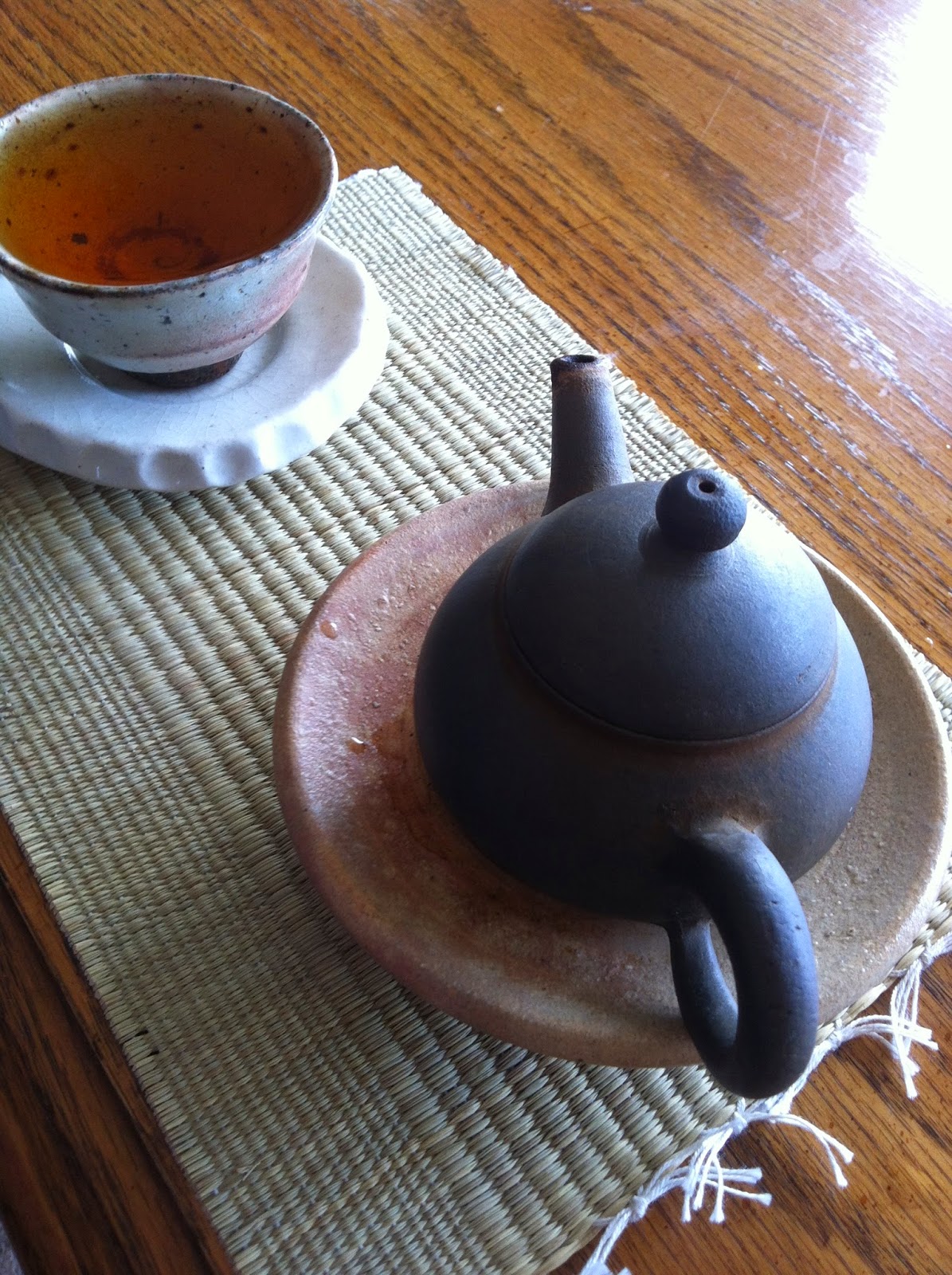Pedro of O5tea kindly gifted a 2013 and a 2011 sample of O Juk Hun's balhyocha from a personal stash from his travels in Korea last year.
Since “O Juk Hun" is not a common name in Korean tea circles so one pressed Pedro on a background story. He said that O Juk Hun is a shaman from the Hadong growing region. He ages his balhyocha in onggi, which are spread all over the hills.
This post will give readers a bit of an idea of how balhyocha will age. Previous tastings of aged balhyocha was not that exciting (see here and here).
2013 O Juk Hun Balhyocha:
The very tinny, delicate dry leaves have a very light and distinctly sweet plum and raison odor. The smell is powerfully fruity and almost perfume sweet. These are most definitely ujeon picked leaves.
These leaves are steeped in warm water and deliver very light, almost watery sweet fruity notes. The fruity notes seem to evolve and change from plums notes to more tropical notes. There are some forest notes suggestions in there as well. There is a creamy, almost chalk, mouthfeel which coats the mouth and upper throat. The aftertaste develops an almond milk type of note then minutes later again evolves into fruit. The qi is felt pooling in the abdomen.
The second infusion starts with a slightly creamy, orange-juicy, almost wood like taste with creamy fruit tastes acting as a base. These perfume-like, almost ylang-ylang, fruity tastes stretch out into the aftertaste. The end taste carries a slightly deeper, light juicy-wood taste.
The third starts watery and fruity but develops slightly bland wood-forest undertones. The mouthfeel is soft and slightly sticky and chalky. Slight fruit tastes stick in the mouth. A longer fruity wood taste drags out.
The fourth is again displaying a watery-woody-fruity taste. The mouthfeel holds as the flavors become more monotone but still flavorful. There is a longer aftertaste over the sticky mouthfeel- more fruit than wood in the aftertaste now.
The fifth is much the same but with smoother woodier, still sweet, forest notes becoming more distinct over the fruit notes.
The sixth was steeped longer with water a short time off boil and just pushed more wood dominated tastes out. The qi is mild and makes the chest feel slightly light.
The seventh was a long steeping with woody-sweet, barely-deep fruit tastes. Much the same.
2011 O Juk Hun Balhyocha:
These leaves a bit larger than the 2013 O Juk Hun likely saejak grade leaves. These leaves have a deeper, more purple hue to them as well. The dry leaves smell of deep, rich, heavy raison and carry a slight smell of library books, that which you would expect in a 10 years aged puerh. Examining the dry leaves I would never suspect these were the same teas 3 years removed.
The first infusion is a watery, slightly malty sweet flavor. That carries dusty aged tastes along for the ride. The most prominent taste is a currant/raison taste that sticks to the breathe. The mouthfeel is very watery and thin here.
The second delivers sweet, malty fruit tastes, with deeper tastes of currant/raison filling in the base taste of this tea. There is still an aged- library book like taste faintly dragging along the taste profile. The mouthfeel is very thin and is mainly realized in the front of the mouth.
The third gives off a watery, almost juicy fruity, initial taste. It is somewhat supported by the faint currant/raison tastes. The taste finishes dusky and slightly dry in the mouth. Overall the taste is very watery and fairly monotone. The qi of this tea moves in the abdomen slightly.
The fourth infusion is very bland, almost tasting like a standard watered down black CTC tea. It has some watered down suggestions of malt fruit or currants in the background. The mouthfeel dries out the tongue. There was still a stale note of aged tastes in there as well.
The fifth was much the same under a longer infusion.
Conclusion: These teas seemed like they were produced using different grade leaves. The 2013 pick earlier, ujeon grade, where the 2011 look like saejak or even early jungjak grade. Even with this difference aging of 3 years doesn't seem to give balhyocha any depth, instead as noted before the taste, texture, and qi of the tea seems diminished. This is similar to the conclusions reached in the past.
Thanks again Pedro for this interesting aging experience.
Peace















No comments:
Post a Comment